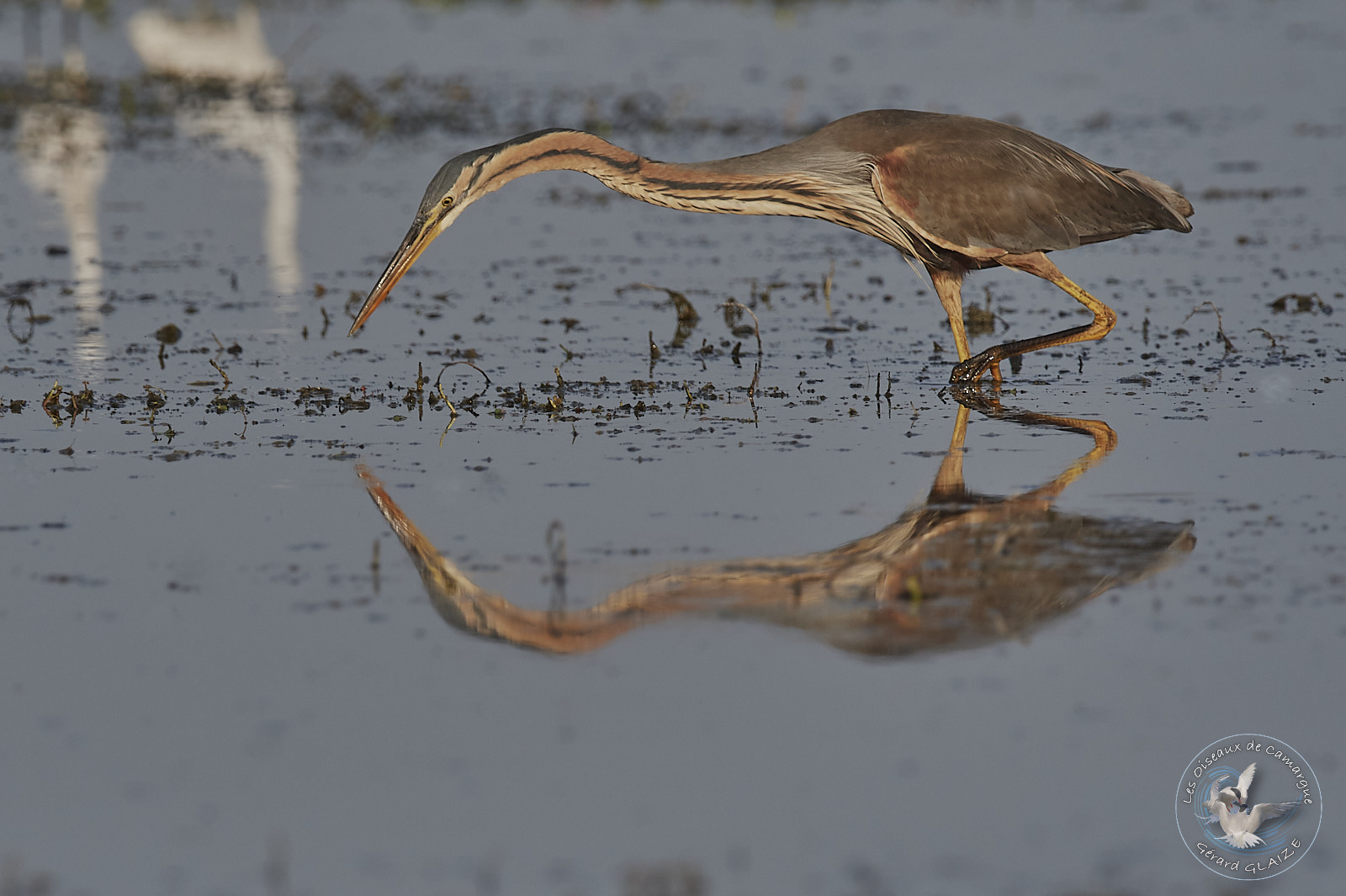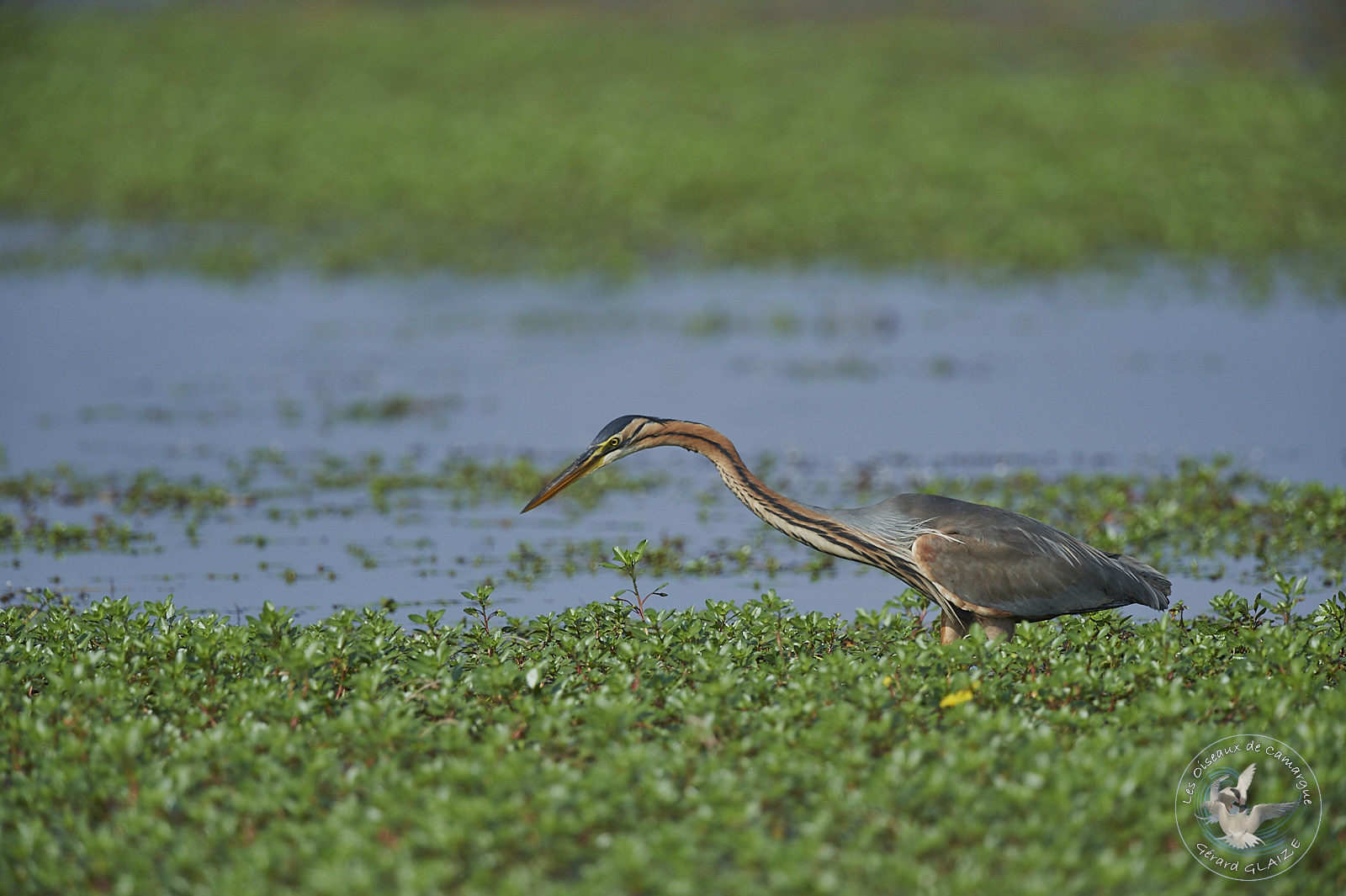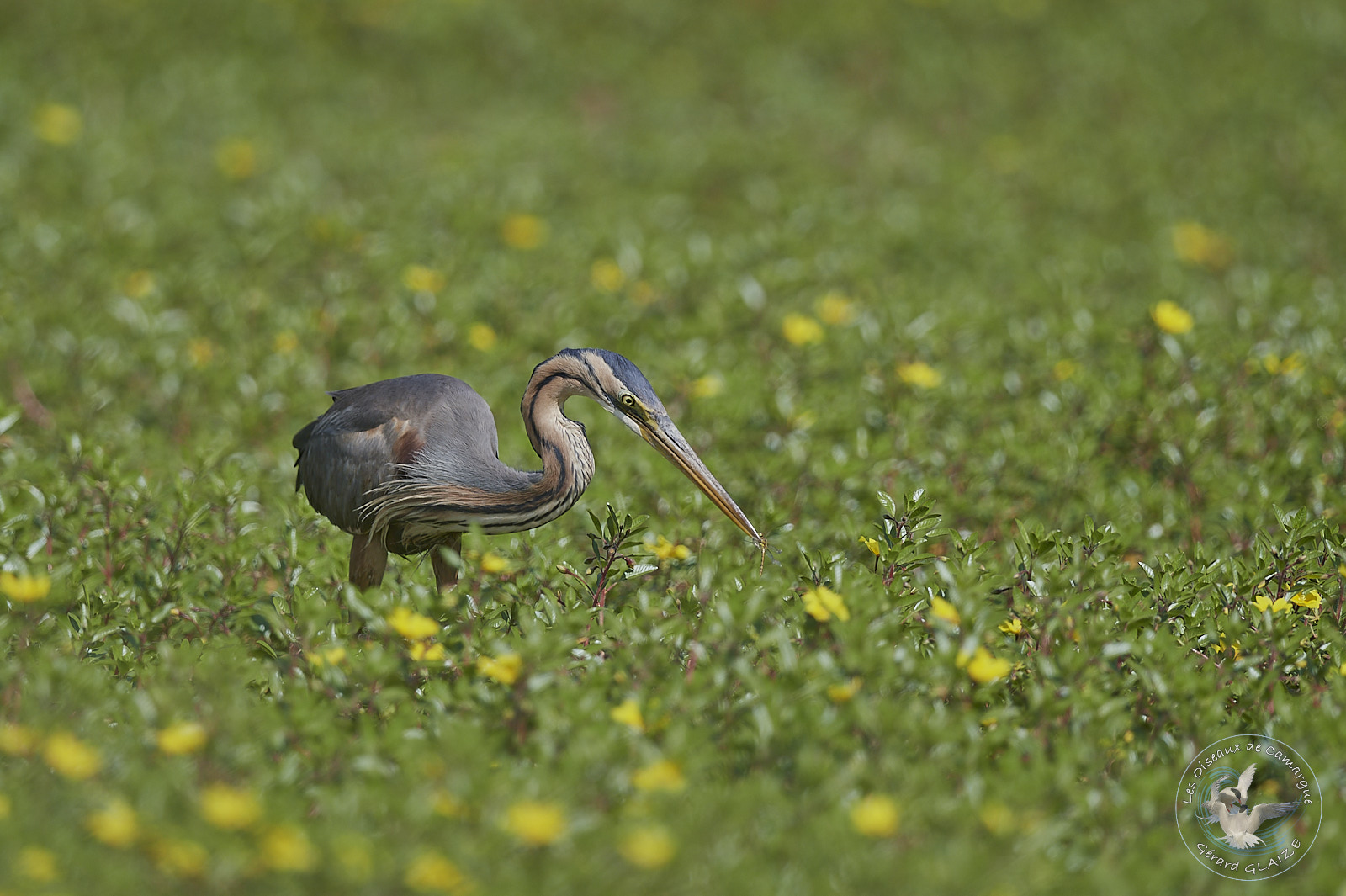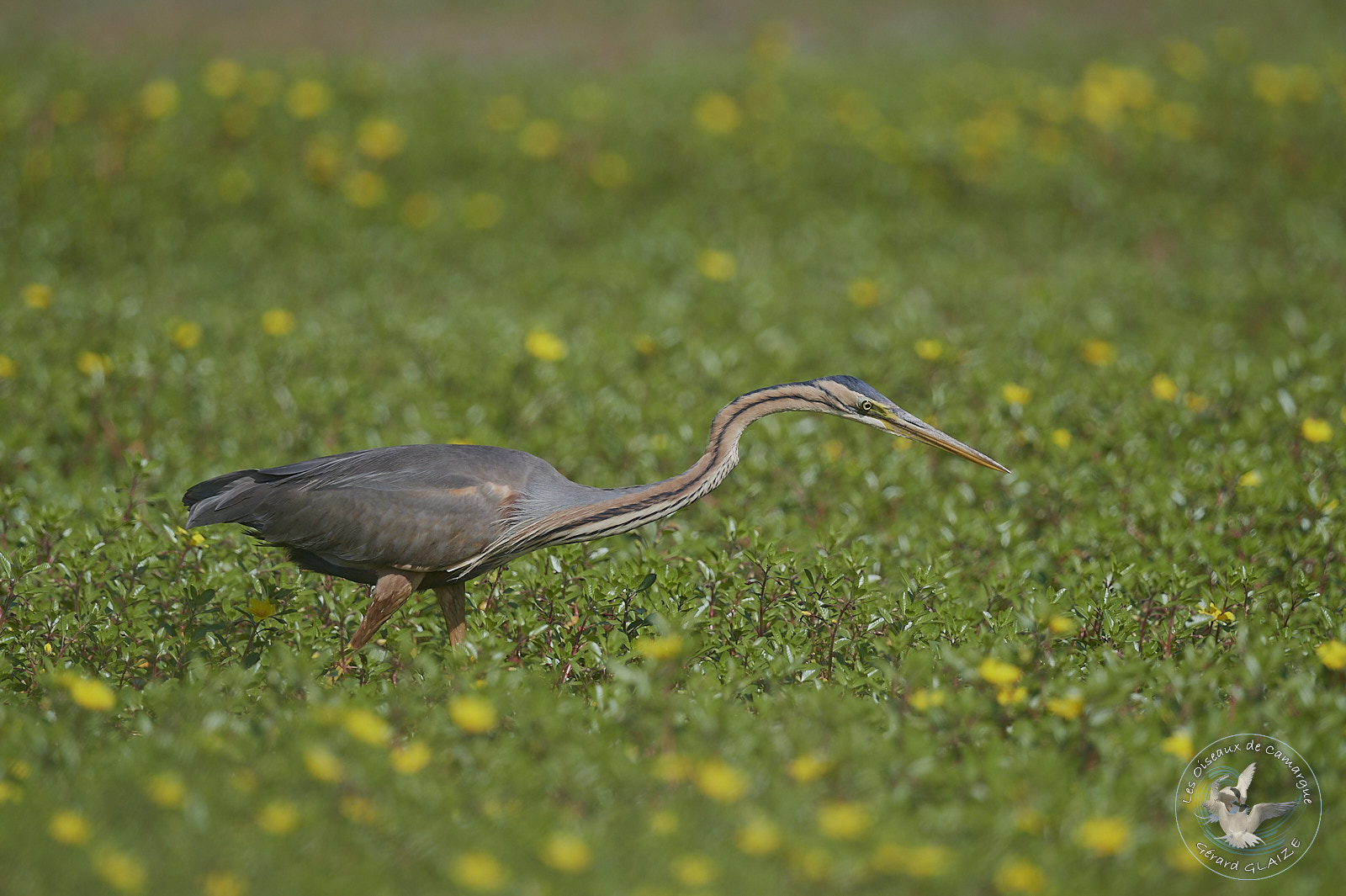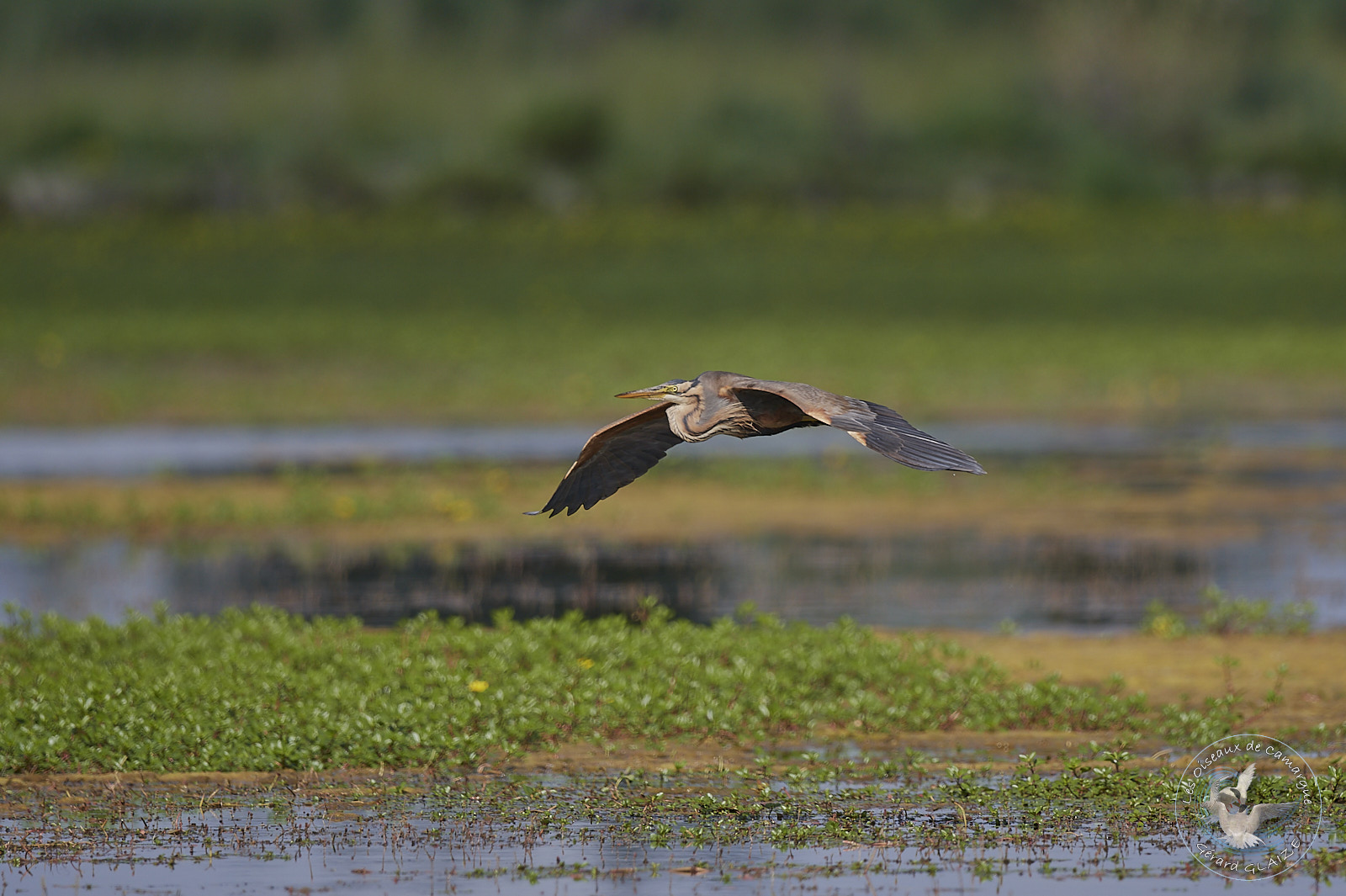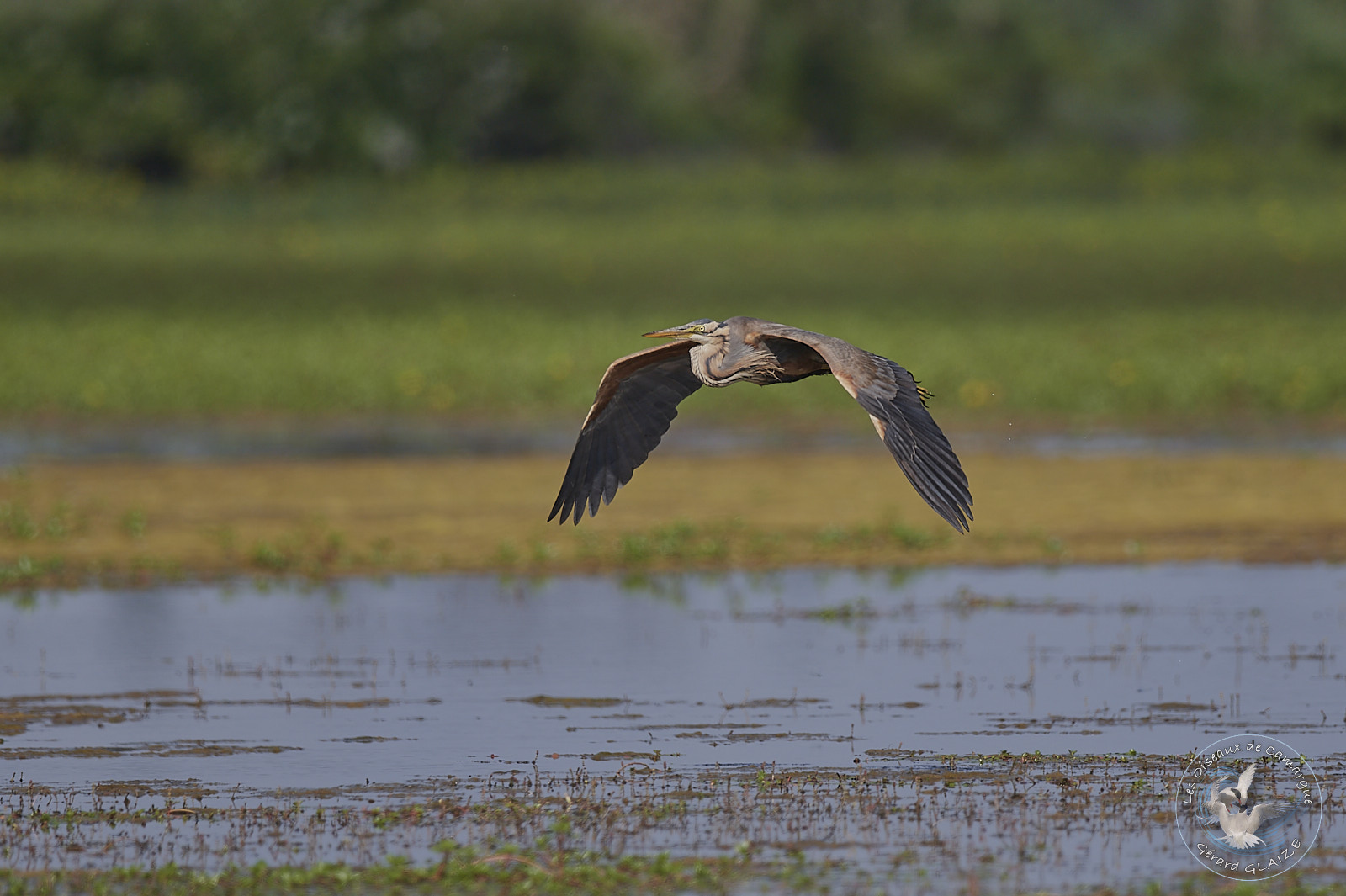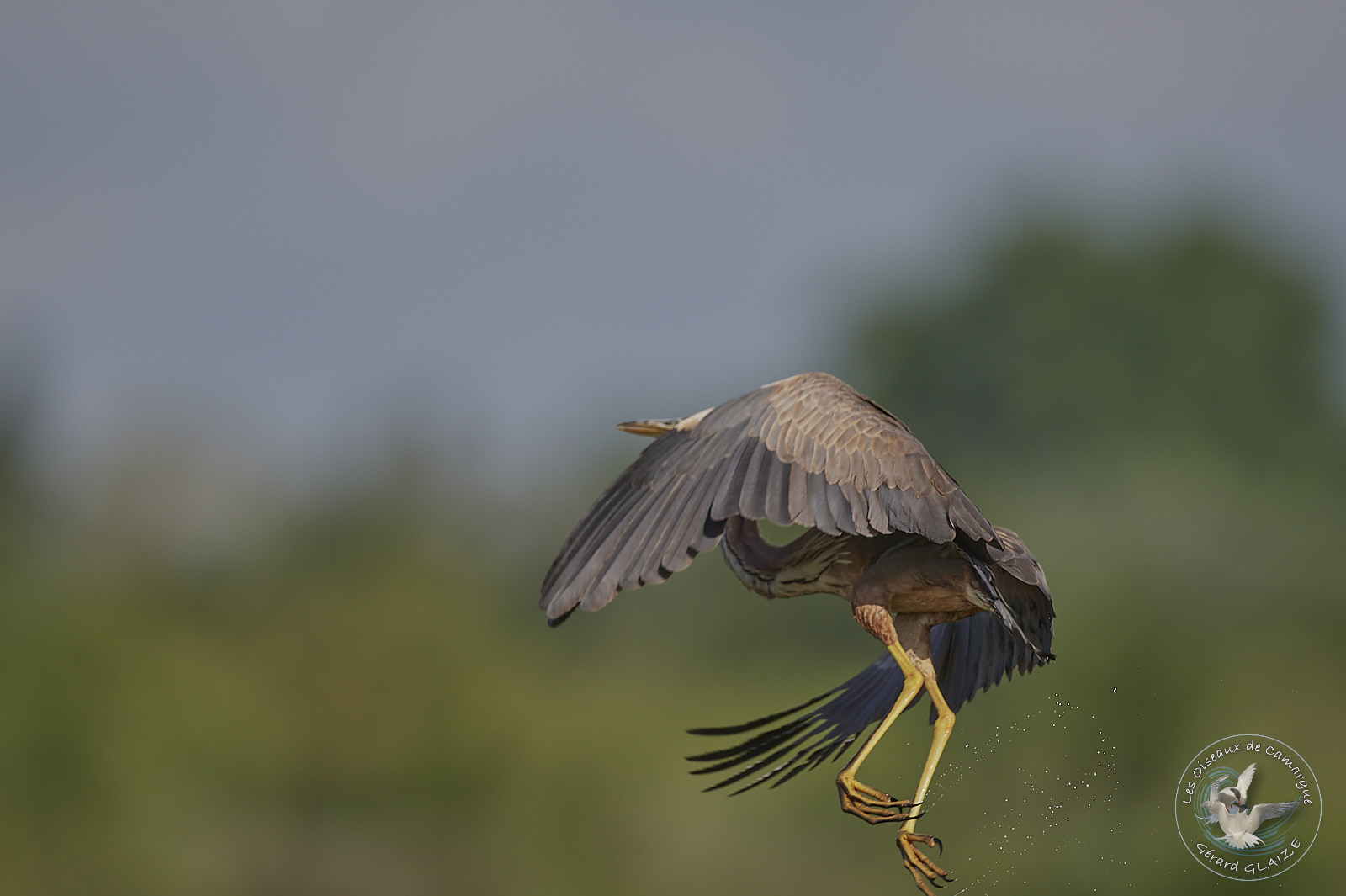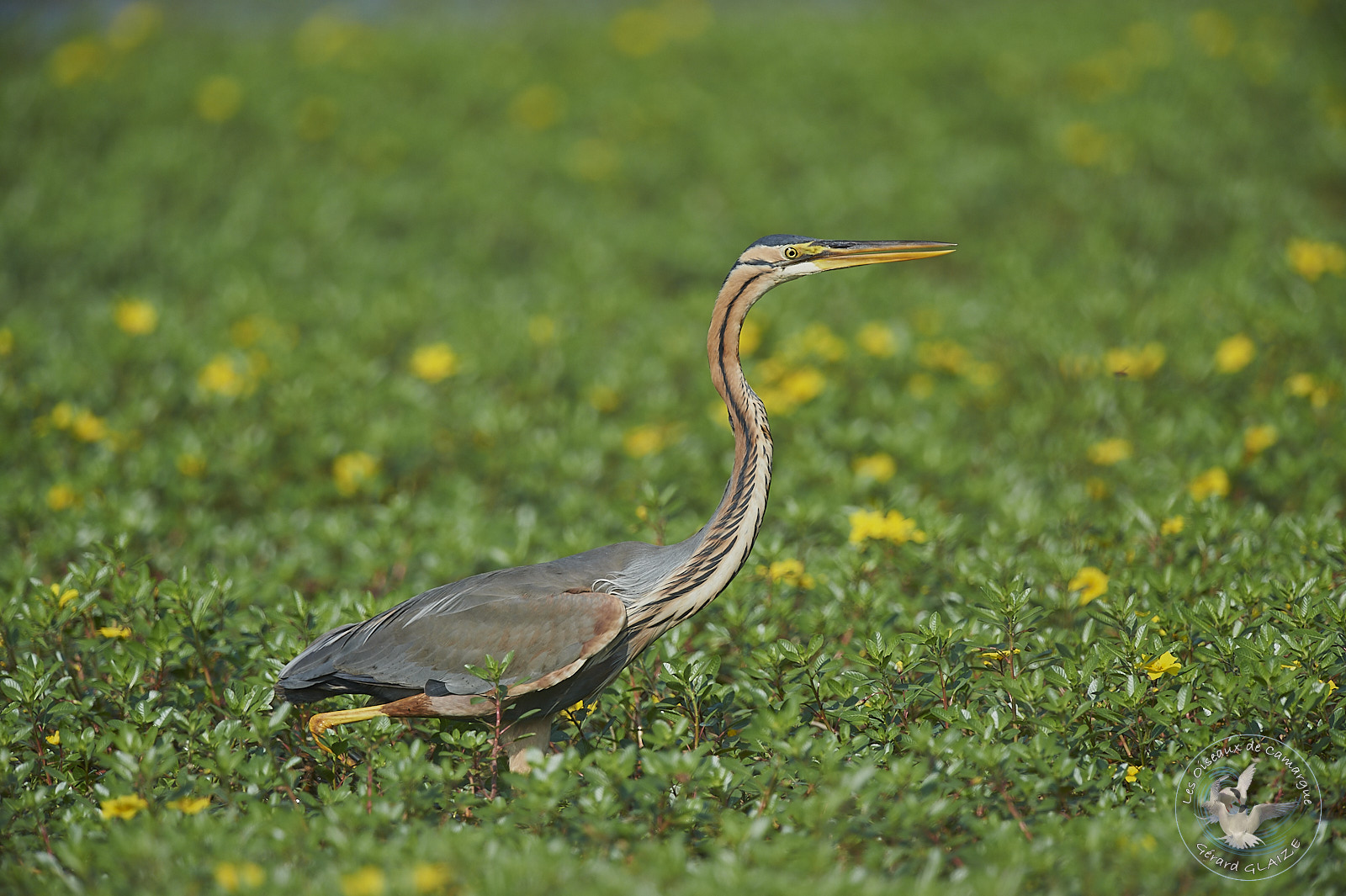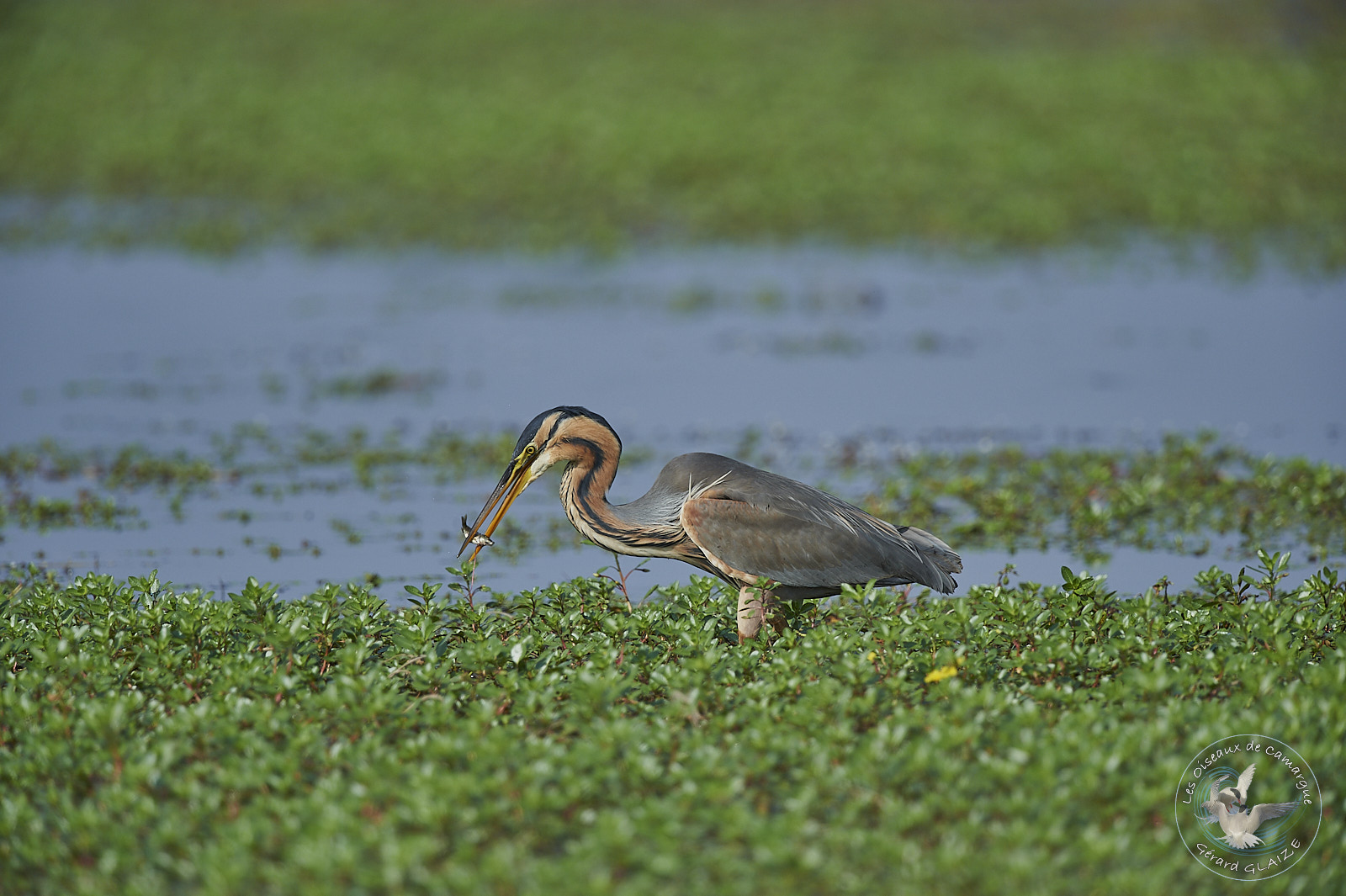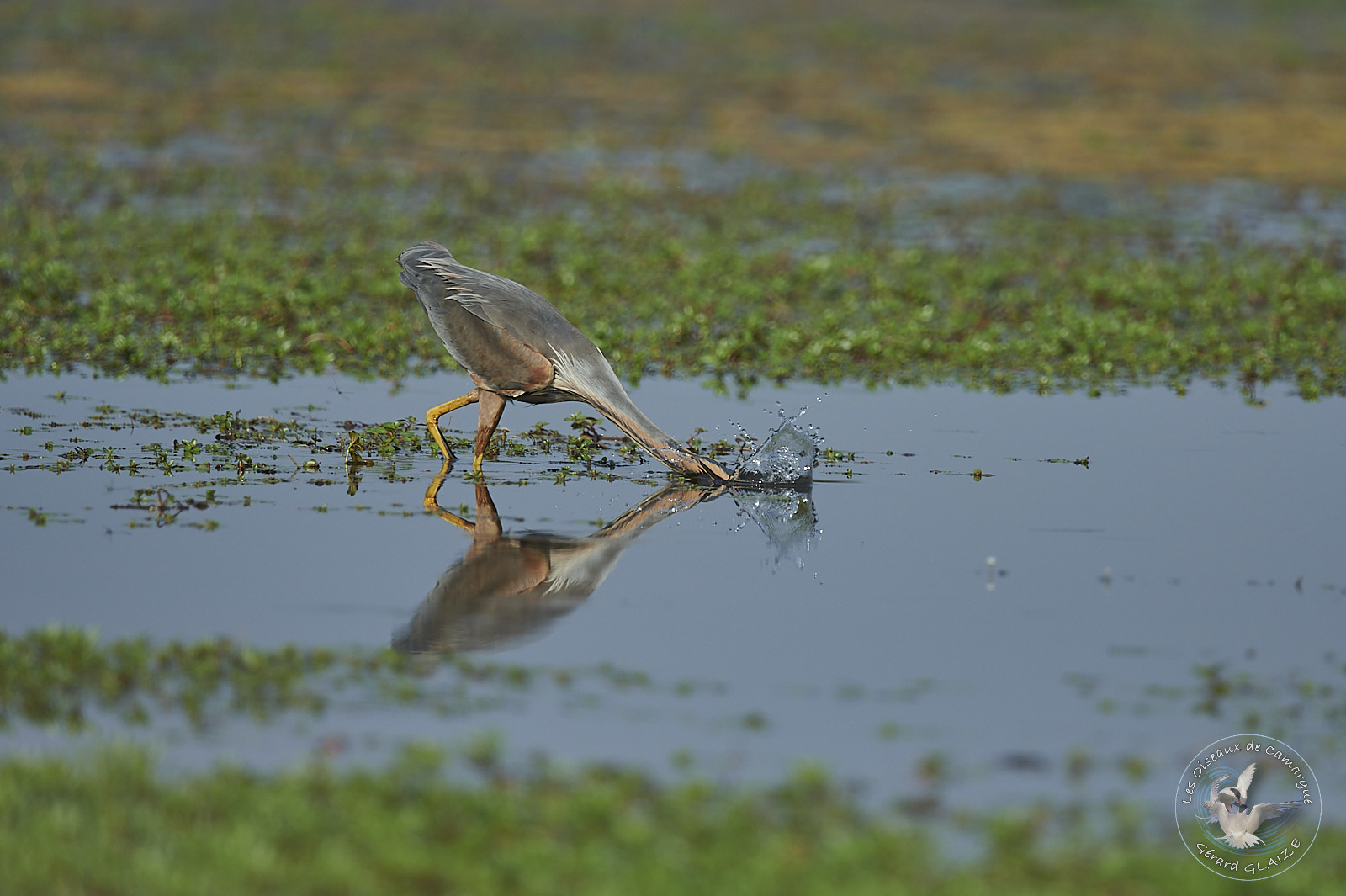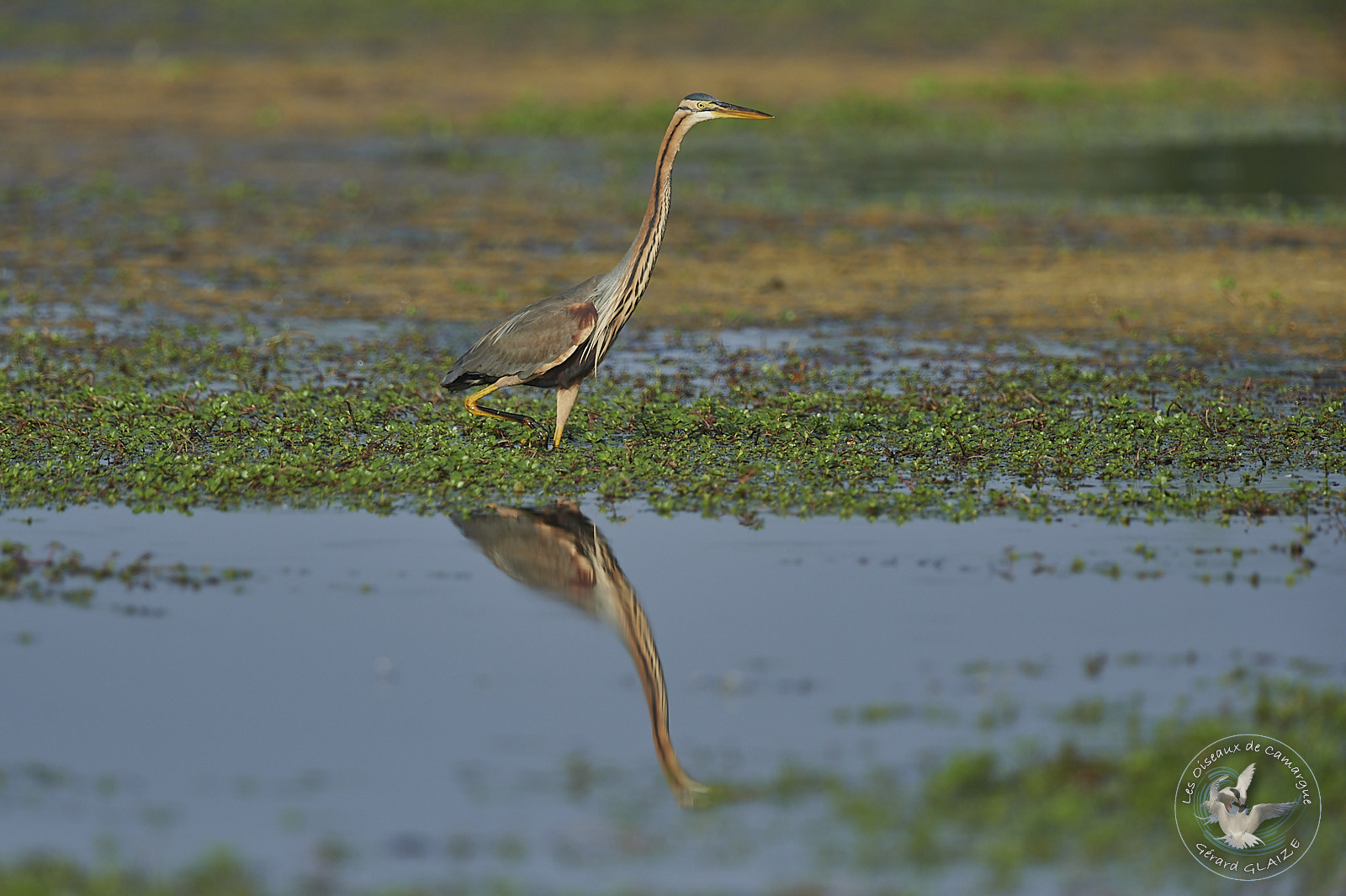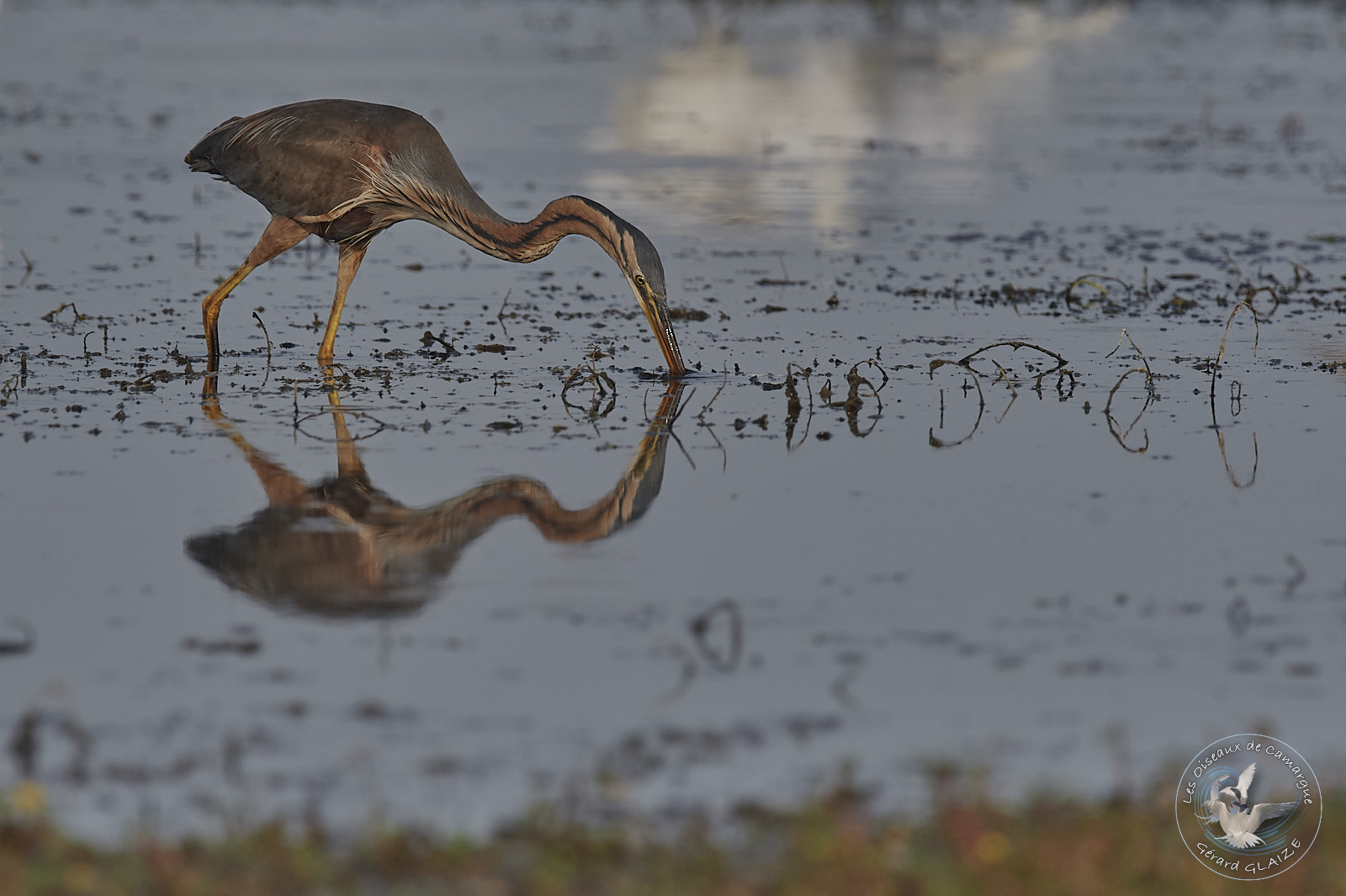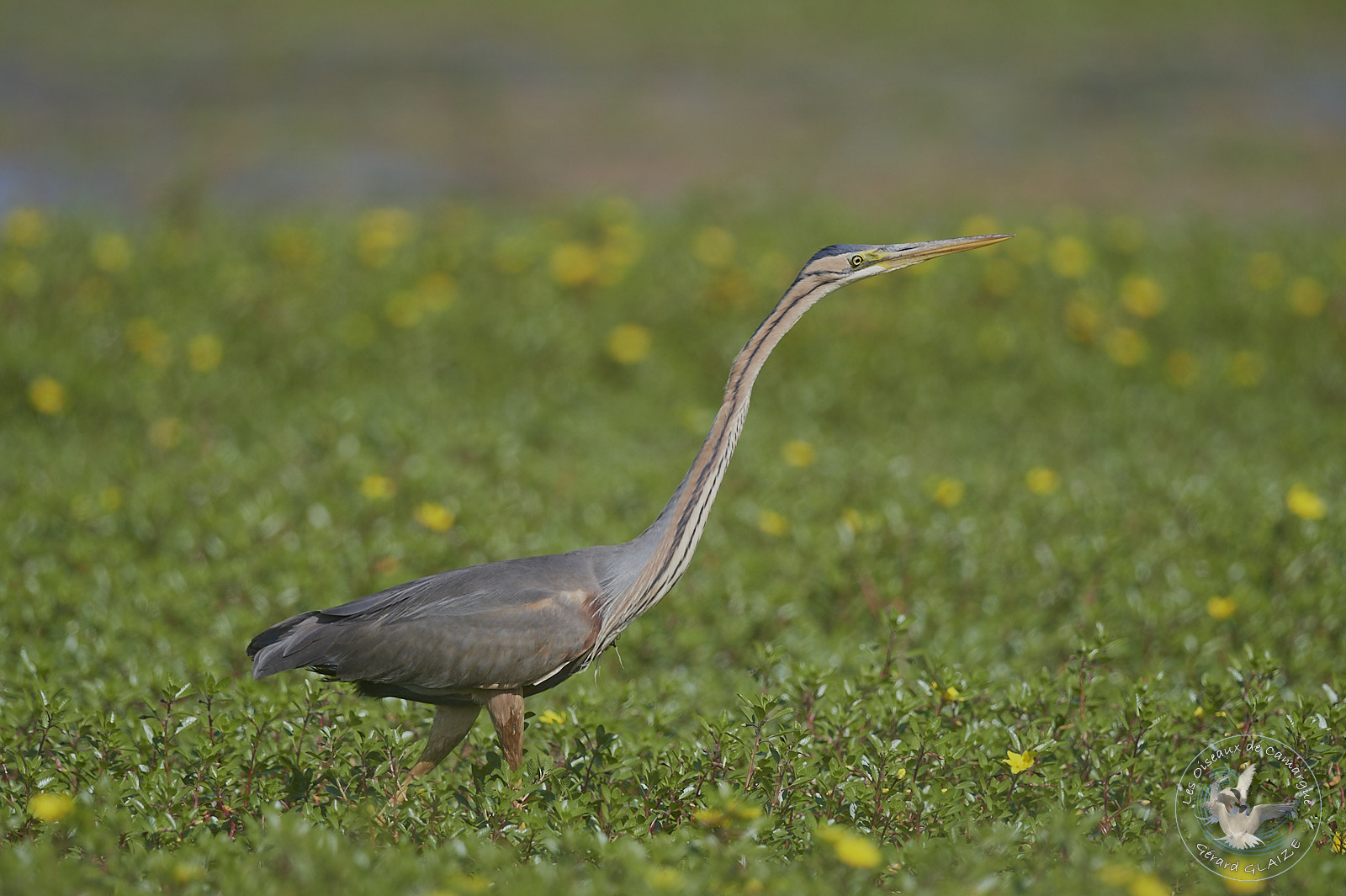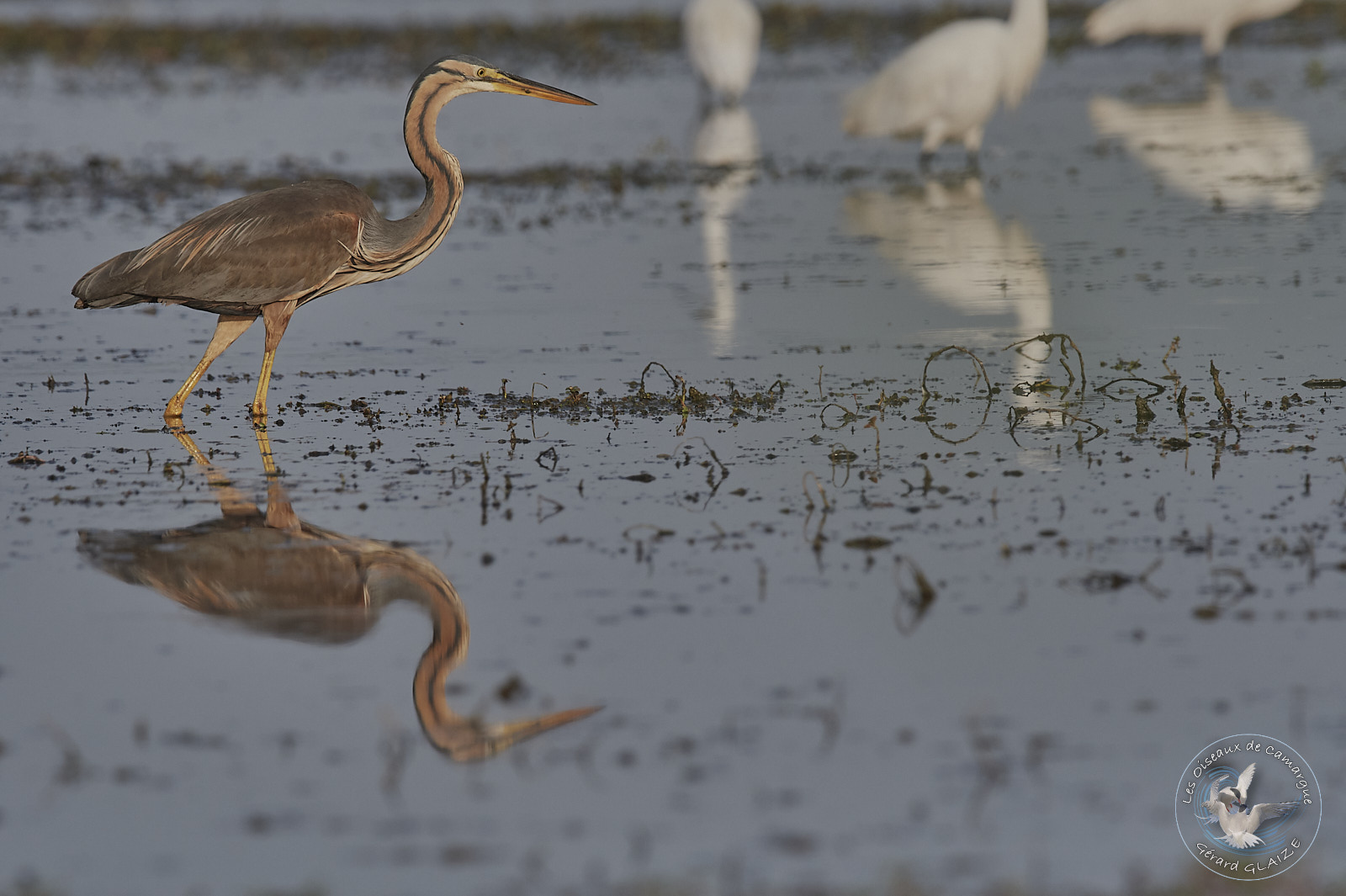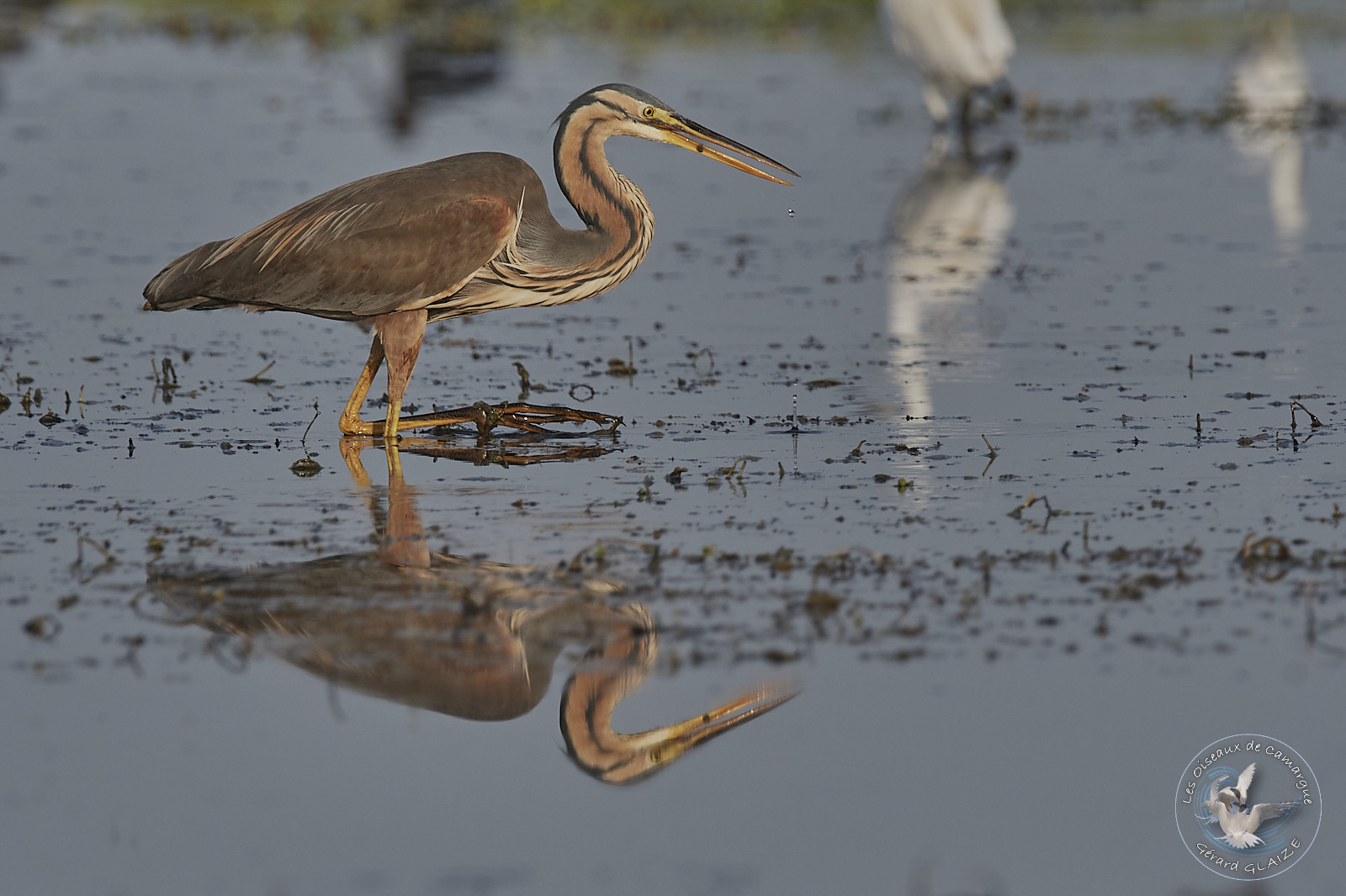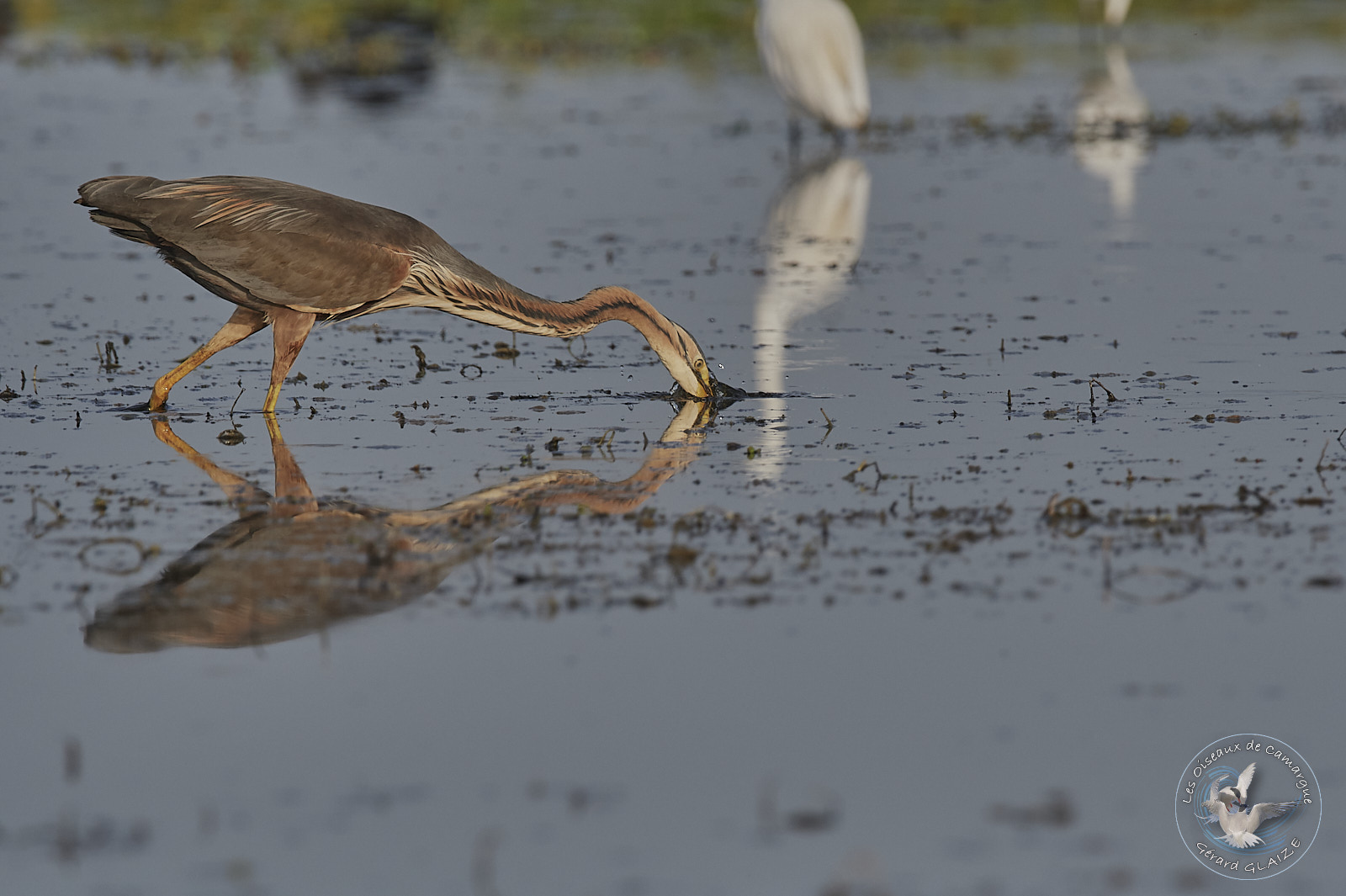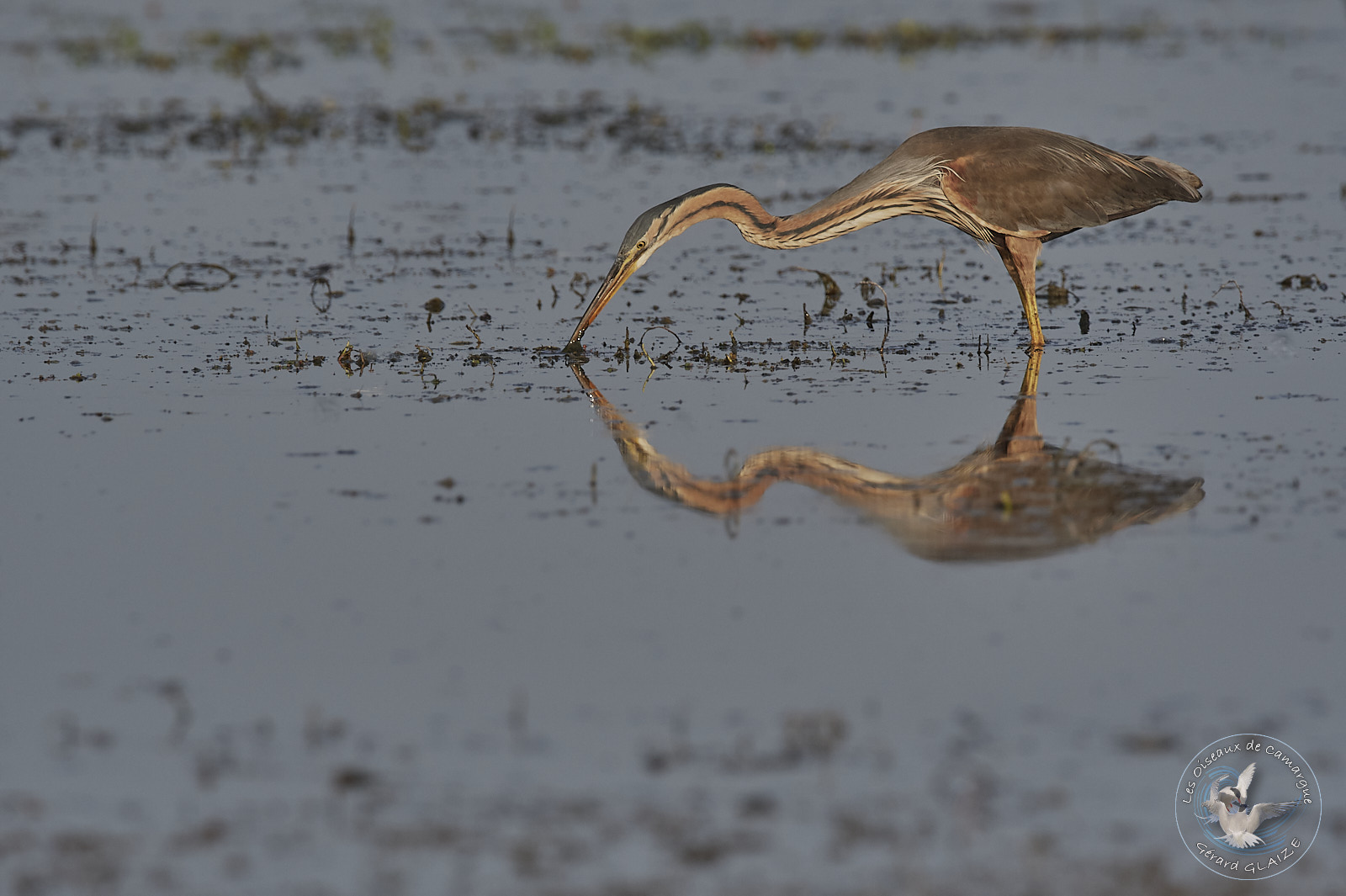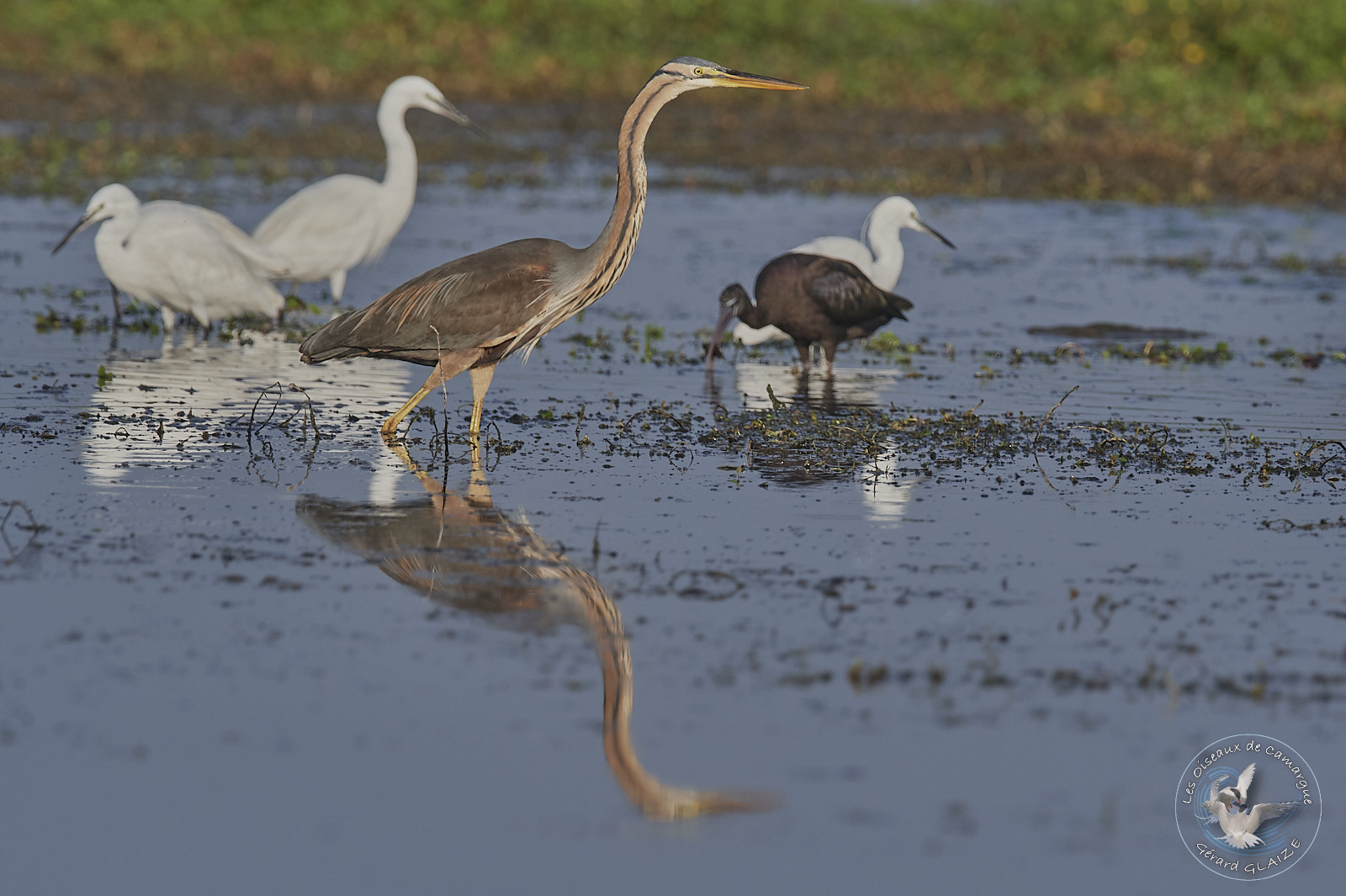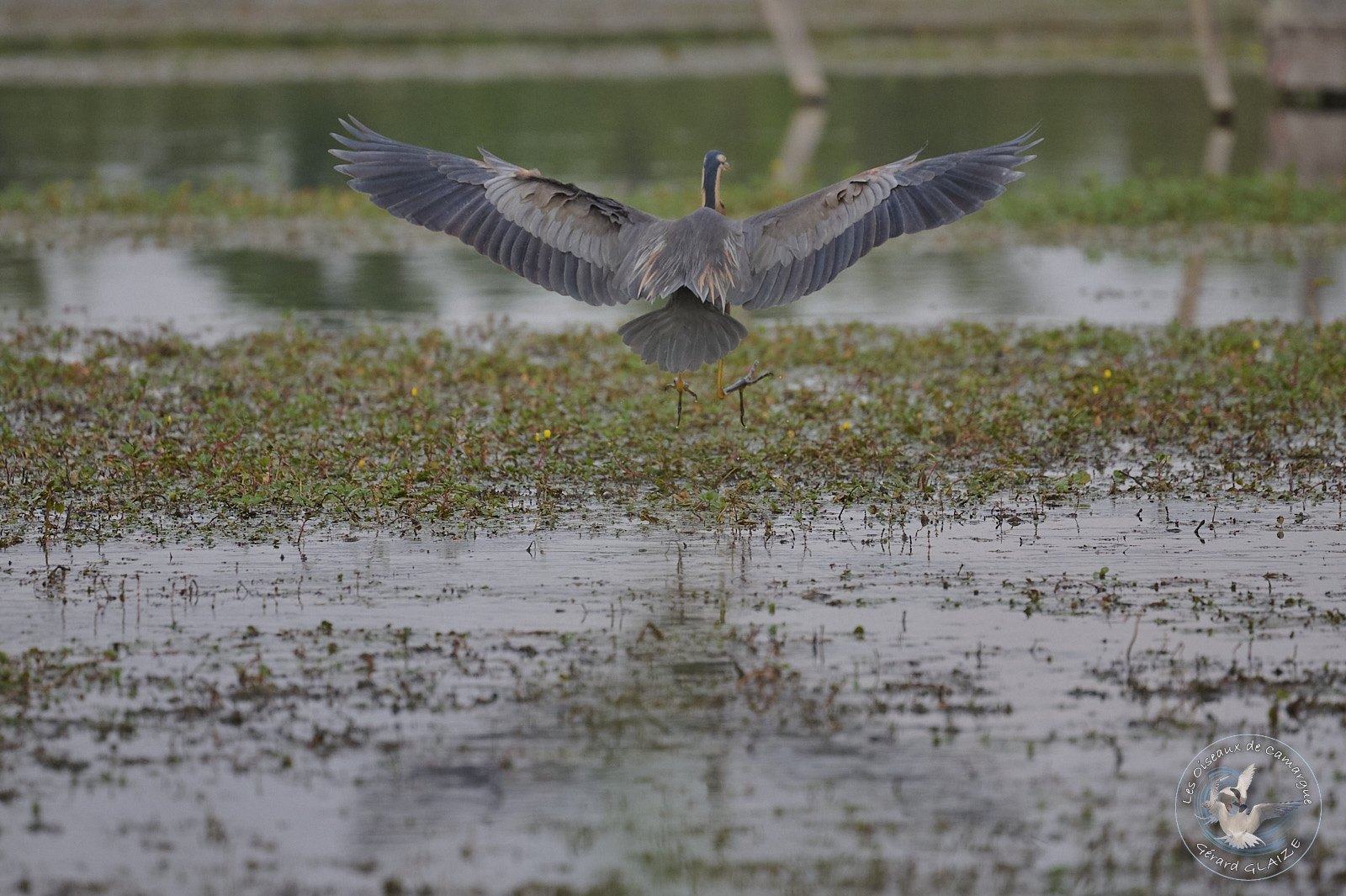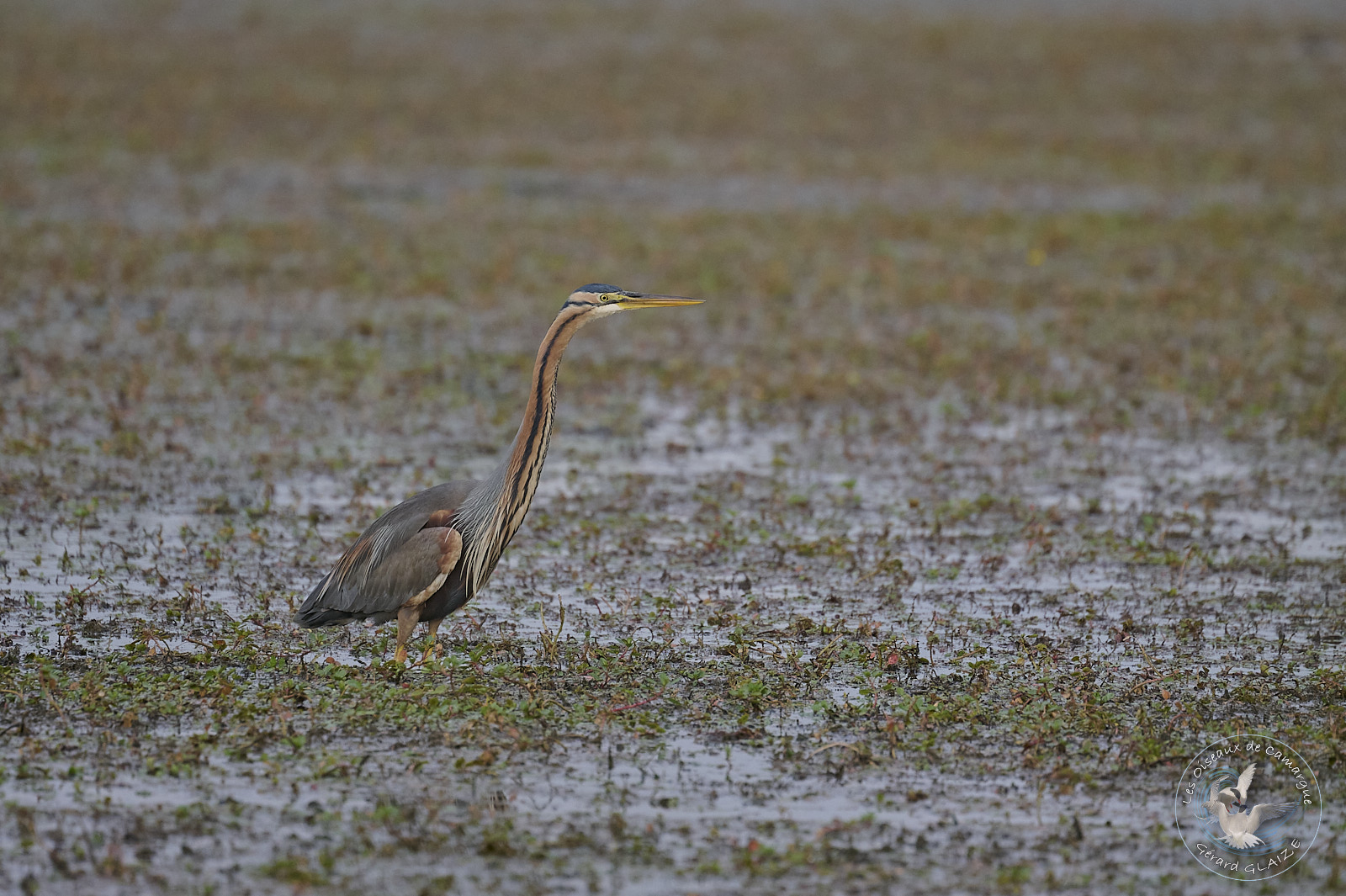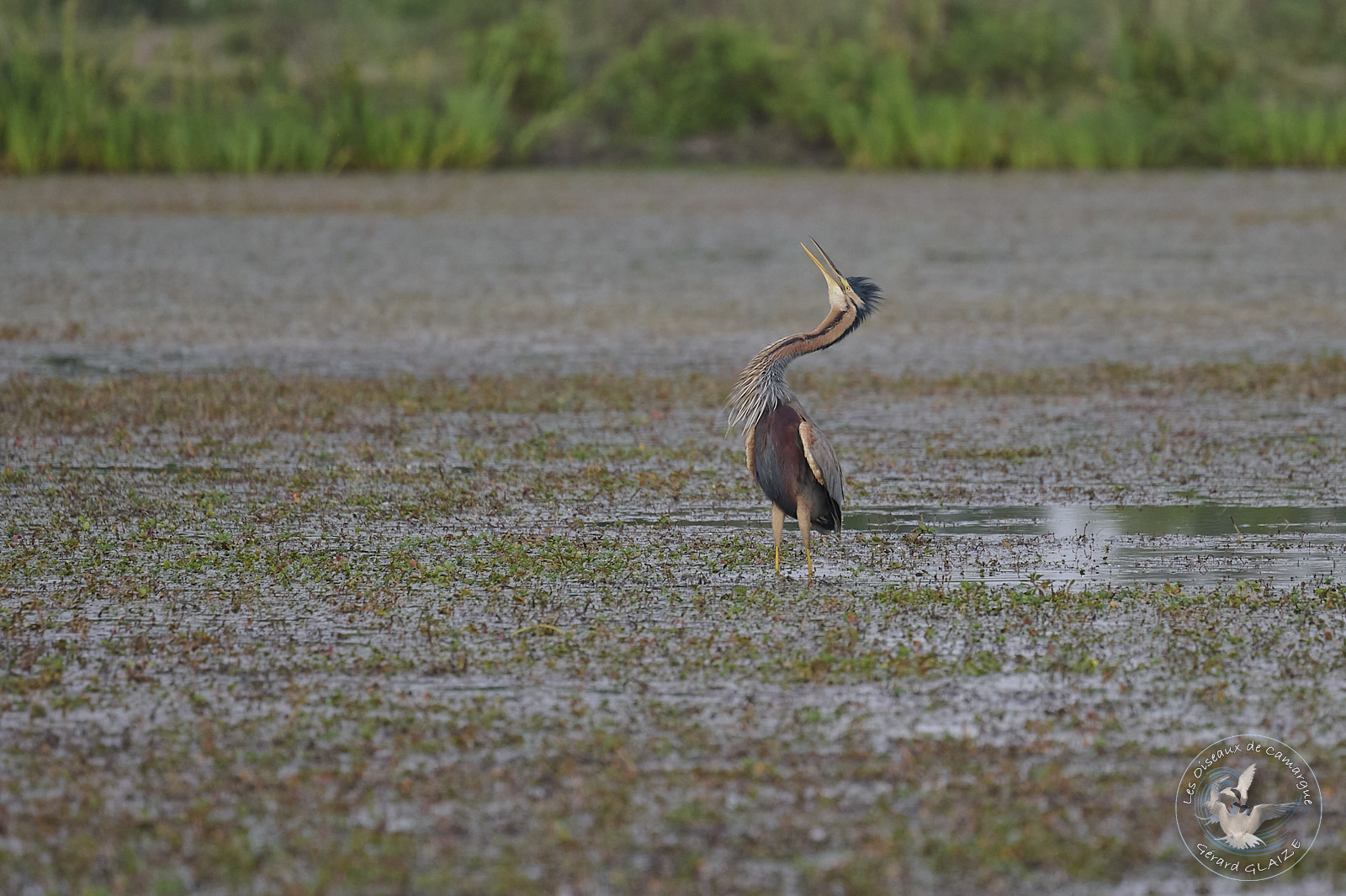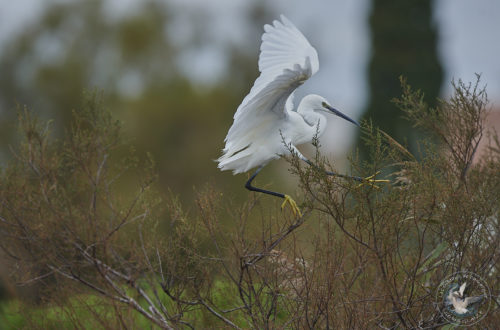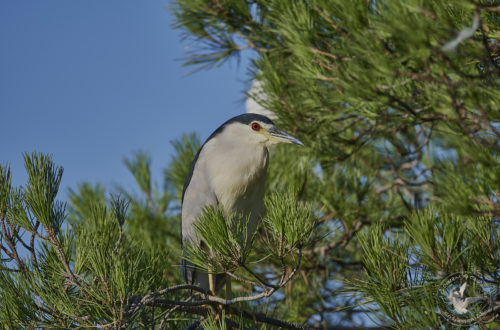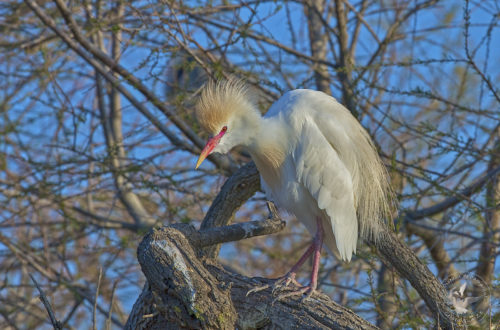Purple Heron
Last updated on June 21st, 2024 at 06:21 pm
The purple heron has purplish-brown plumage with slaty-grey wings, reddish-brown breast, black abdomen and purplish-red flanks and scapulars. Eyes are light yellow and its head is decorated with a black cap, the back of the neck being reddish brown and white on the front with black streaks approaching the top of the chest which is decorated with longer feathers at the mating season. The long pointed bill is yellow. The yellow legs tending towards orange allow it to walk in water and mud. Unusually long fingers for a heron allow it to walk on soft vases, floating leaves and to land on bushes.
In breeding plumage, both adults have long feathers on their chest. Both sexes are similar.
Purple Heron
Scientific name : Ardea purpurea
Family : Ardeidae
Long. de 78 à 95 cm, Env. de 120 à 150 cm
Weight : de 600 à 1.400 gr
Flight
The purple heron flies slowly with its neck retracted, and its long legs and toes projected backwards. Its flight is powerful and regular, with slow wing beats.
Habitat
The purple heron breeds on the banks of lakes and marshes with extensive reed beds. Outside of the breeding season, it prefers more open wetlands bordered by vegetation.
Regime – Diet
The purple heron actually feeds in shallow fresh water, waiting without moving for prey to pass by, slowly stalking fish and frogs, or spearing them with its long, sharp, powerful bill. The purple heron feeds on fish, mollusks, crustaceans, aquatic insects, larvae, reptiles, small rodents and small birds.
There are more left in the reed beds than the Gray Heron. But it is a shy and solitary hunter, preferring night and early morning to hunt.
Nesting
The purple heron usually nests in small colonies, in dense reedbeds in shallow water, about a meter above the water. The bulky nest is a platform made of reeds or twigs. Male brings the materials to the female who builds the nest. The non-brooding adult uses other additional nests, as do the young when they emerge from the nest.
The female lays 2 to 5 light blue-green eggs. Incubation lasts approximately 25 to 30 days, carried out by both parents. The adults feed and protect the chicks. They regurgitate food directly into their beaks or into the nest. The young leave the nest after ten days and settle in nearby branches. However, they return to the nest to be fed. They fledge at three months old.
Migration
The Purple Heron is a migratory bird present and nesting in Europe and North Africa, however occasionally wintering in Western and Southern Europe. He arrives in the Camargue in mid-March.
Protection
It is a species with low numbers which has probably declined significantly in Europe. However, the main threat to this bird is the disappearance of large reed beds as well as the drying up of wetlands.
The Purple Heron has benefited from total protection on French territory since the ministerial decree of April 17, 1981 relating to birds protected throughout the territory. It is listed in Annex I of the Birds Directive of the European Union. It is therefore prohibited to destroy, mutilate, capture or remove it, to intentionally disturb it or to naturalize it, as well as to destroy or remove eggs and nests and to destroy, alter or degrade their environment.
Cry
The purple heron is generally silent. In flight, its call is similar to that of the Gray Heron, but higher up. We can also hear a loud and screaming “krank”, and a “kar-kar-kar” at the nest or taking off.
Useful Links
Other Links
- You can see the article from my site “Birds of Camargue” for more information on the Camargue and the Birds.


